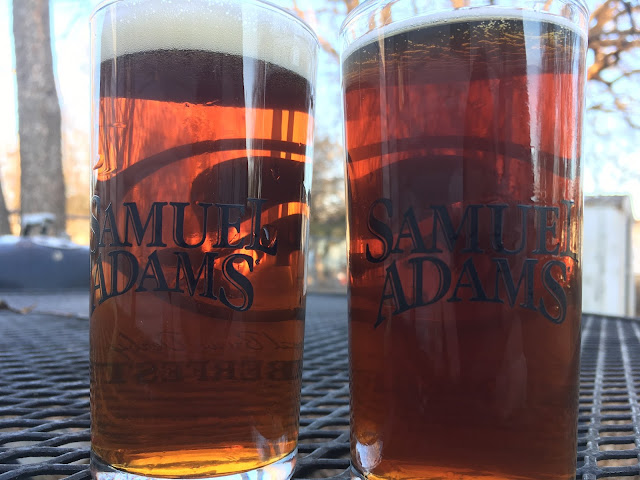I had taken a long break from brewing. I last brewed a beer in February of this year. Homebrewing is fairly strenuous work and somewhat time consuming. It takes several hours to brew a beer and clean. I had other things going on in my life and was also drinking a lot of commercial beer. There are so many good ones in the beer coolers these days.
But the itch started growing toward the summer into fall. I imagined the beers I wanted to make. One of which was a helles. I brewed no lagers in 2017 so it seemed a good time to make some more. My homebrew club had a competition in October. I went to help judge the competition at our usual meeting location, the homebrew shop. After judging, I looked around at their yeast selection and found Wyeast 2308. I think it was the only German yeast they had on hand. I was actually looking for a different yeast, maybe 2124 or 2206. Since 2308 was the only one they had on hand, I purchased it. The shop did not have Weyermann pilsner malt, only Avangard. So I went to a different shop and purchased 10 pounds of Weyermann pilsner.
The next day, I threw together a simple recipe in brewtoad. However, I forgot to update the batch size to 5 gallons from 5.5, the default. So I was thinking my 10 pounds of pilsner malt would generate a 1.50 beer. I had an ounce of Hallertau hops in my fridge. They were pretty old if I recall correctly. But these were 60 minute bittering hops so I was not concerned.
Brew day went smoothly. Wort, at 1.060 OG, went into the better bottle very clear. I pitched 2308 yeast from a swollen smack pack. I placed the fermenter in a plastic bucket filled with water and frozen water bottles. And then waited. And waited. Fermentation did not really take off for 24-36 hours. It formed a krausen about an inch thick, which faded fairly quickly. Six days later, expecting it was nearly finished, I checked the gravity. To my surprise, the gravity had only dropped to 1.030. I thought back to a single post I had read on a homebrewing forum about this yeast stalling and panicked. I thought that was happening to my beer. As such, I removed the beer from the bucket and let it ferment at ambient temperature. A few days later it had dropped to 1.020. And finally to 1.010-12 (sometimes hard to read the hydrometer) on November 8 when I kegged it. The yeast were still visibly moving around in the beer at that point, though to a lesser degree than before. However, I did not want the ABV increased any more, so I went ahead and kegged.
The first samples were hazy and a little sweet. Very grainy. Maybe slightly corny. Perhaps even a savory element. To the point that I thought perhaps others might detect diacetyl. I've never actually detected diacetyl in a beer. I drank it fresh from the keg this way for a few days before adding gelatin. Since then, the beer has started to clear up and is pretty crisp and golden.
By the second weekend in December, this beer has cleared up nicely. Taste is sort of a corny, pilsner malt with no detectable hops, in the aroma or flavor. Sometimes I pick up a musty almost metallic smell. But i noticed it yesterday while having some adjunct american lagers. So I'm not sure that its a flaw so much as a feature. That said, I also have Urban Chestnut Zwickel, which is not really a helles but sure tastes like one, and I didn't notice an aroma like that. Overall it's pretty drinkable and I'm pretty pleased with how it turned out. Not quite sure what I'd do to improve it. If I could somehow achieve the bready biscuity malt flavor that UC Zwickel has, I'd do it. But I don't have a clue what they do (their web site says their beer has caramel malt ... what!?).
















